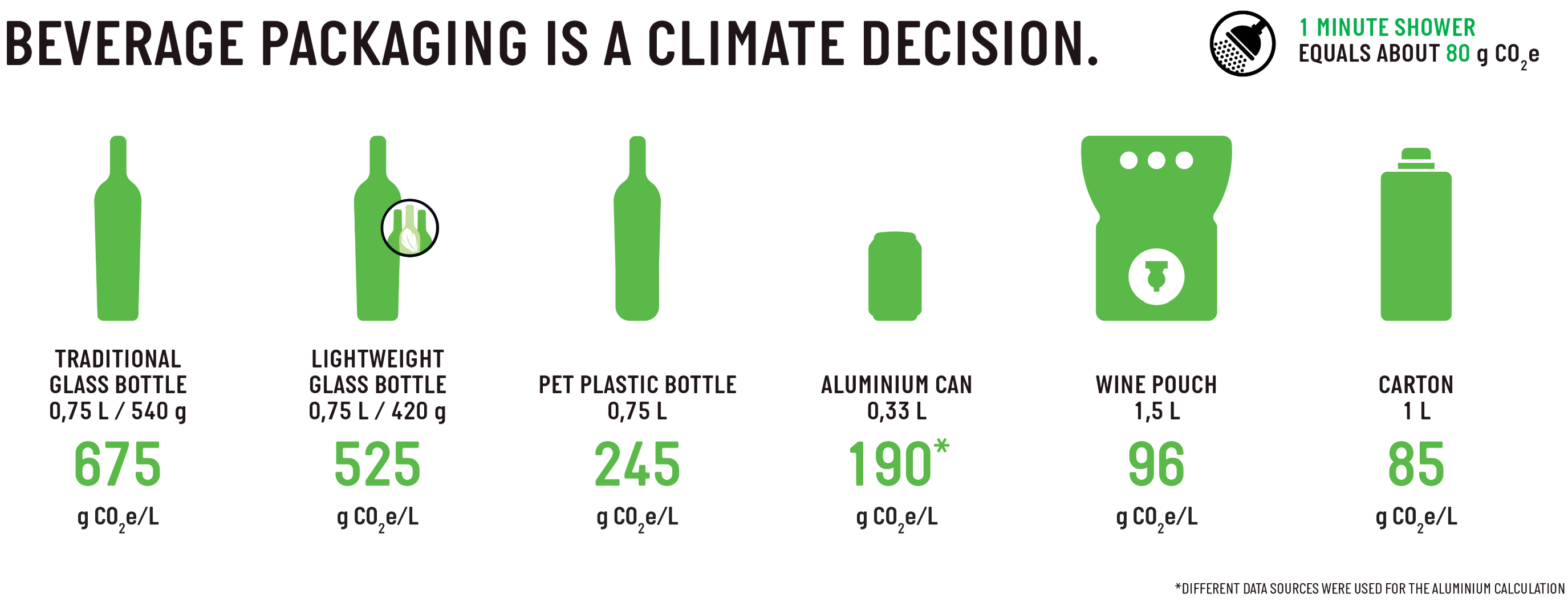Sustainability through transparency in the wine and spirits industry

Sustainability in the wine and spirits industry has grown to be more important the past decade. The industry depends heavily on quality ingredients and healthy ecosystems, and the sustainability of agriculture production and climate change are significantly impacting crops, and thus, all products in the wine and spirit industry.
Today, the wine and spirit industry is regarded as a high-risk sector for lack of sustainable operations and control throughout the supply chain. The alcoholic beverage industry scored an average of 4.8 out of 10 in the Drinks Industry Sustainability Index - Trends Report 2020, indicating that while sustainability is being more integrated into the industry, the work to clean up the industry is not keeping pace.
However, the wine and spirit production supply chain is extremely dynamic and complex, which makes sustainable development easier said than done. The industry has grown from small, localised productions to a global, multimillion industry. The rapid and global growth of the alcoholic beverage market has led to a loss of production control.
Download the guide and deep-dive into Sustainability in the Alcoholic Beverage Industry.
With an increasingly diversified market and educated consumers that demand products both flavorful and sustainable, the industry needs to deliver on both. What are some of the main obstacles for sustainability in the wine and spirits industry and how can they be managed?
Beverage packaging
The biggest environmental impacts for wine and beer are caused by the manufacture of product packaging. Media tends to focus its attention on single-use plastic and its harmful impact on the environment and because of this, creates strong consumer reactions. While the environmental damage such as microplastic in our oceans, caused by single-use plastic bottles must be considered, multiple studies show it to be one of the least harmful packaging if used and recycled correctly. According to studies commissioned by Finland’s alcoholic beverage monopoly, Alko, in 2018 and 2019, glass bottle packaging produces the most emissions and has the greatest climate impact per liter of beverage because of the energy it consumes during manufacturing. Boxed wines, on the other hand, generate the smallest. Check out the list and table below to see how the amount of CO2 emitted differs dependent on the packaging.
CO2e per beverage packaging type:
- Traditional glass bottle 0,75 L - 675 g CO2e per liter
- Lightweight glass bottle 0,75 L - 525 g CO2e per liter
- PET Plastic Bottle 0,75 L - 245 g CO2e per liter
- Aluminum can 0,33 L - 190 g CO2e per liter
- Wine Pouch 1,5 L - 96 g CO2e per liter
- Carton 1 L - 85 g CO2e per liter

Think outside the box and reduce climate impact
To ensure sustainability in the wine industry, we must consider our choices. From both a consumer and producer perspective, choosing boxed wine can lead to a greater net positive impact in the wine and spirits industry. Studies based on wine packaging trends have shown that the wine packages with the least environmental impact are boxed wines, bagged wines and cardboard cartons. The carbon footprint of a box wine is 70 g CO2e per liter, compared to a traditional glass bottle which emits around 676 g CO2e per liter. That’s five times higher. Still, glass is the most commonly used material for wine packaging globally.
One of the main barriers in transforming the way wine is packaged is prejudice and tradition. Studies have shown that consumers associate heavy, glass bottles with luxury wine. These assumptions have led to the idea that wine in PET bottles or in boxes has lower quality. This is a critical factor when deciding what kind of wine to buy since the kind of wine consumers buy often decided based on status and impression. Thus, wine and spirit vendors need to spend extra effort changing consumers’ mindsets from what, in fact, is luxury and quality consumption. Raising awareness of climate impact may help in these efforts and create consumption based on sustainable choices – this may happen over time but can be effectively communicated through marketing initiatives.
Shift to circular economy to reduce climate impact
What many reports agree on is that recycling is inevitable for smart, sustainable change. For example, reusing materials from recycled aluminum cans for new production generates 85% less CO2e compared to a can made from virgin materials. Not only can aluminum be reprocessed and reformed endlessly, but the metal keeps its quality during the recycling process. Environmentally responsible packaging is not unattainable – according to FoodDrinkEurope, huge improvements have been made over the last few decades. Leveraging recycling technology and innovation, increasing the use of recycled materials, and exploring the use of alternative materials are some ways to address the issue.
Deep-dive into how to stay relevant in the wine and spirit industry by downloading our guide to Sustainability in the Alcoholic Beverage Industry.
The victims of lack of transparency in the supply chain
Another area of vast environmental and social impact in the wine and spirit industry lies in the agricultural stage of wine and spirit production. Agricultural work is often isolated and inconsistent due to changing harvest seasons and remote locations. This has resulted in seasonal workers that suffer from no social protection and irregular income, many of them migrants, elderly, women, and children. Something that could be mitigated with supply chain transparency in the wine and spirits industry.
Supply chain needed in the rum industry
Poor working conditions in the agricultural stage have numerously been linked to the wine and spirit industry. Fairfood International Reports explored supply chains of large enterprises in the rum industry and found that sugar was being sourced from local producers in Nicaragua and Guatemala who were working in dangerous conditions. Due to “working long days in warm conditions with lack of access to drinking water, breaks, and shade,” workers contracted devastating chronic kidney disease of non-traditional causes (CKDnT). NGOs are now calling on these rum companies to take responsibility and investigate the workers' conditions across their whole supply chain.
Victims in the wine industry
In 2016, another wake-up call came in the form of a documentary, Bitter Grapes, which brought to light the poor working conditions of workers on vineyards in South Africa and exposed the severity of human rights breaches in the wine industry. The organization Arbetet sheds light on what it’s like for South African farmers; the continuous endure of racism, abuse, and being paid far below federal minimum wage. One of the problems brought to light was how employers refuse to give workers permanent employment, leaving them without a secure income or social protection. Long-time workers were being replaced with temporary workers in order for employers to keep costs low.
Human rights crimes in agriculture don't only occur in traditional risk-regions and territories. A report released in 2018 by the Italian trade union for farmers, Flai Cgil, exploited similar crimes in Italian agriculture. The report found that over 400,000 agricultural workers in Italy – home to some of the oldest and biggest wine-producing regions in the world – risk being illegally employed and work in extremely vulnerable conditions. Agromafia, what this criminal structure has become known as, are mafia-like organizations where most of the victims are migrant workers. According to Systembolaget, the Swedish government-owned alcohol monopoly, one factor of increased risk in Italy is the exploitation of migrants and unorganized labour.
Learn more about the challenges the wine and spirits industry faces today, the reasons behind it and how they can be managed by downloading our guide to Sustainability in the Alcoholic Beverage Industry.
Work to support the farmers in your supply chain
Violations against human rights need to be addressed urgently. However, the victims in these situations live most often in vulnerability and don't have the authority or support to negotiate better livelihoods, salary, and rights from their employers. Therefore, a strong commitment from policy-makers, distributors, and producers are necessary in order to take control over the situation and ensure sustainable working conditions in the wine and spirits industry.
Systembolaget, along with other large Nordic distributors, uses its position as the only distributor of alcoholic beverages, to work with their suppliers to address the problem. For instance, by using a code of conduct (CoC), Systembolaget makes sure that suppliers fulfill what is expected of them, and thus set a standard. The effectiveness of setting CoCs is highly based on decisions made from real-time data. Doing the contrary – basing decisions on generalized and common knowledge – risks focusing on territories or regions that are generally seen as higher risk locations, and thus overlook other at-risk areas. Mapping out supply chains and regular follow-ups will lead to a more transparent control of the supply chain and, hopefully, the ultimate goal of ensuring human rights is not too far behind.
Collaboration is key
Improving labor conditions while minimizing the climate footprint depends on a functional collaboration in the wine and spirits supply chain. Positive impact lies in taking responsibility in every step across the supply chain, which involves everyone, from farm to table. From agricultural managers making sure everything is done ethically on the fields, to producers creating the products, distributors setting demands on suppliers, and customers making conscious decisions. Every action contributes to sustainable development.
Industry leaders, such as large enterprises and distributors, have the capacity to reshape the industry and set appropriate ground rules for sustainable activities. A strong collaborative information-sharing system is an effective way to identify opportunities for sustainable change, centralizing global information in one place. Information-sharing and supply chain transparency adds value not only for the business at hand, but for the industry as a whole. Over time, challenges in the supply chain will be easier to detect and risks can be mitigated. In doing so, the amount of negative impact will be reduced and the wine and spirits industry will transform into a sustainable, resilient actor.
Want to know more about the industry’s impact on the planet and how to build supply chain resilience in your business, download the guide to Sustainability in the Alcoholic Beverage Industry.
Related blog posts you might like:






%20as%20the%20deadline%20approaches.%20Learn%20about%20compliance%20requirements%2c%20potential%20delays%2c%20and%20key%20updates..png)

